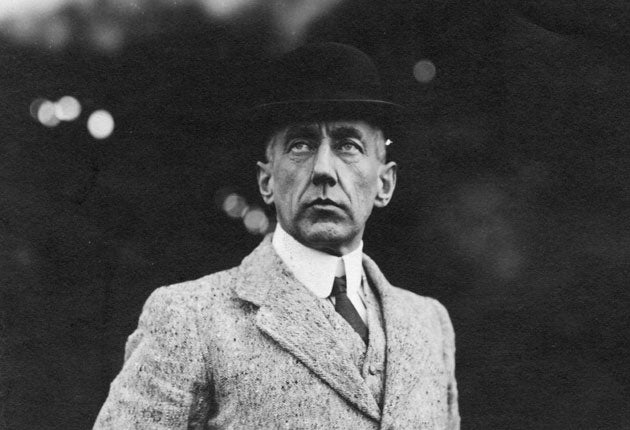Rare films of polar explorers are restored
Silent movies of Amundsen and Scott as they raced across Antarctica in 1911 are to be screened this week

They were the last of the great explorers and the fiercest of rivals. This week Scott and Amundsen – who captivated the world with their race to the South Pole 100 years ago – will be reunited when complete footage of Roald Amundsen's expedition is shown for the first time since 1912 alongside a film of Captain Scott's journey to the pole.
The race ended in tragedy for the Englishman Robert Scott, who perished, along with his four colleagues, on his way back from the pole – which he reached 35 days after Amundsen. His diaries gave a graphic account of the hardship they endured – and the famous last words of his comrade Lawrence Oates, who stepped outside his tent with the words "I may be some time".
Yet, despite the Norwegian Amundsen's victory, it was Scott who became internationally famous. This was partly due to his tragic heroism but also to the professional film he had made of the expedition – selling the rights to Gaumont. Scott's early PR coup is one of the reasons he is much better known than Amundsen. A restored version of the film, called The Great White Silence, will also be shown to British audiences this week.
Amundsen, in contrast, took just a few minutes of amateur footage. This was last shown in Britain during his lecture tour in 1912 – he had reached the pole in December 1911 – and is regarded as so rare and important a historical artefact the UN placed it on its Memory of the World Register.
Jan-Anders Diesen, professor of film at Norway's Lillehammer University, says the film has now been pieced back together and restored. It will be shown for the first time at the British Film Institute's Silent Film Festival in Leicester which begins on Thursday.
"The footage of the whole expedition has been put together into one film, which will be accompanied by the same music from 1912," said Professor Diesen. "Amundsen shot half the film himself as they were travelling to Antarctica. But once they got to the ice another member of the expedition, Kristian Prestrud, took over. This has not been seen in England since 1912, and it is the first time all the footage has been seen together since then."
Exploration is the theme of the BFI festival, which features a preview of the fully restored The Great White Silence as well as several newly discovered films.
Bryony Dixon, curator of silent films at the BFI National Archive, said she had only recently become aware of the existence of the Amundsen film. "I hadn't heard of it, and I know a lot about the subject," she said. "The Norwegians have been restoring it in time for the centenary celebrations of the expeditions. They set off in 1910, and reached the pole in late 1911 and 1912. We have restored The Great White Silence, which was Scott's film. He was sponsored, in a way, by Gaumont, and the films would be sent back to be shown in cinemas in newsreels."
Subscribe to Independent Premium to bookmark this article
Want to bookmark your favourite articles and stories to read or reference later? Start your Independent Premium subscription today.

Join our commenting forum
Join thought-provoking conversations, follow other Independent readers and see their replies